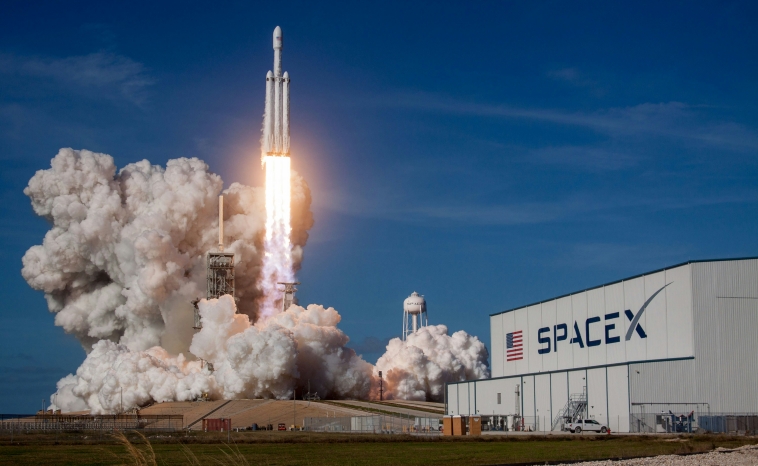Space Tourism: Would You Take a Trip?

Ever wanted to escape the gravity of Earth and uncover wondrous views of the cosmos? The day might be closer than you think! In this article, we’ll take a closer look at the growing space tourism industry, exploring its past, present, and possible future.
Imagine, if you will, the dawn of a new era in travel. Picture yourself donning a sleek spacesuit, strapping in, and shooting off into the cosmos, leaving the constraints of gravity behind. This isn’t a scene from a sci-fi movie; it’s the future of space tourism.
Space travel, once the exclusive domain of astronauts and billionaires, is inching closer to reality for us all. Companies are racing to make space tourism not just possible but comfortable and breathtaking. Indeed, the question might not now be “if” you will take a trip beyond Earth’s orbit, but “when”!
What Is Space Tourism?
In essence, space tourism is the act of travelling into space for recreational, leisure, or business purposes. Not long ago, the idea of venturing beyond Earth’s atmosphere was reserved for elite astronauts and cosmonauts. However, thanks to rapid technological advancements and visionary entrepreneurs, relatively accessible space travel is becoming a tangible reality – albeit a prohibitively expensive experience for most of us!
Imagine soaring above the clouds, breaking free from the “surly bonds of Earth”, and witnessing the unparalleled beauty of the cosmos. Pioneering private companies like SpaceX, Virgin Galactic, and Blue Origin are at the forefront of this revolutionary shift, offering a spectrum of experiences from suborbital flights, which provide a few minutes of weightlessness, to orbital expeditions, allowing for a longer stay in space.
While the current cost of such adventures is hefty, burgeoning competition and constant innovation in aerospace technology promise to make space travel more accessible in the near future. More than just a monumental leap for tourism, such advancements offer a step towards a future where the cosmos becomes a new frontier for exploration and possibly even habitation.
A Brief Journey Through Time: The History of Space Tourism

The story of space tourism began not too long ago, with the term first being coined in the 1990s. In 2001, American businessman Dennis Tito became the first ‘fee-paying’ space tourist. Since then, a handful of private individuals have taken the leap, making the journey to the International Space Station aboard government-owned vehicles.
In 2004, British entrepreneur Richard Branson announced his plans to launch Virgin Galactic, a space tourism company offering suborbital flights. It was the first of its kind and sparked a new era of commercial space travel. Since then, companies like SpaceX and Blue Origin have joined the game with ambitious plans for orbital and interplanetary travel. These developments have opened a new industry and, perhaps more importantly, reignited the world’s fascination with space.
Present Day: Space Tourism in 2024

Fast-forward to today, and space tourism has evolved into a niche segment of the aviation industry. Several private aerospace companies have entered the fray, offering suborbital flights that give tourists a glimpse of space and the thrill of weightlessness. And let’s not forget the stunning view of our blue planet!
Moreover, technology continues to advance at a rapid pace, bringing us closer to the possibility of affordable and frequent space travel. Several companies are working on reusable rockets, improving propulsion systems, and developing cost-effective spacecraft that can carry more passengers simultaneously.
As for when we can expect space tourism to become a mainstream activity, it may be sooner than you think. Virgin Galactic has already begun selling tickets for their suborbital flights, while SpaceX are working to send a civilian mission to the moon very soon.
Looking Ahead: The Possible Future of Space Tourism

But what about the future? Well, the sky isn’t the limit here! As technology advances, we may see orbital and even lunar tourism becoming an everyday reality. Imagine holidaying on the Moon! However, it’s not all smooth sailing (or flying, if you will). Potential limitations exist, such as the astronomical costs, safety concerns, and the impact on our environment.
But with the growing interest and investment in space tourism, it’s safe to say that we haven’t seen the last of this exciting industry. Who knows what incredible experiences and opportunities await us in the future? One thing’s for sure: space tourism has taken off and is here to stay. So, if you’ve ever dreamed of reaching for the stars, now may be your chance to make it a reality. Keep your eyes on the horizon and get ready for lift-off!
The Pros and Cons of Space Tourism

Exploring the universe has always been a fascinating dream for humanity, and with the advent of space tourism, that dream is inching closer to reality. There’s an undeniable allure to boarding a spacecraft and floating among the stars, witnessing the Earth from a perspective few have seen. Yet, as with any pioneering venture, space tourism presents a paradox of thrilling possibilities and daunting challenges.
Pros
On the one hand, the advantage of expanding our boundaries into space is monumental – not just in terms of personal achievement but also for scientific research, education, and global inspiration. Imagine schools where children learn about gravity by watching live streams of tourists playing ping-pong with water droplets in zero gravity, or think of the scientific breakthroughs that could come from more frequent human activity in space.
Cons
On the flip side, the environmental impact of launching rockets into space cannot be overlooked. Given our current global climate crisis, the carbon footprint of space missions – though undertaken by a select few – could have significant repercussions for a planet we’re already struggling to protect. Furthermore, the cost of these expeditions puts them out of reach for the average person, raising concerns about elitism and accessibility.
And yet, it’s hard not to be captivated by the potential of space tourism. Companies invested in space travel are already researching more sustainable fuel options and ways to reduce the cost per trip. If successful, they will help make space more accessible to everyone. The industry’s progress speaks to our unyielding desire to explore and push beyond existing boundaries. If managed thoughtfully, space tourism could be a driving force for unity, environmental innovation, and education.
To Infinity and Beyond?

Space tourism is an exciting prospect that could revolutionise our relationship with the cosmos. But it’s not without its challenges, and it’s up to us to navigate these celestial waters carefully. So whether you’re a die-hard space enthusiast or just curious about the possibilities, keep your eyes on the stars and see where this incredible adventure takes us. One thing’s for sure: the sky is no longer the limit. Let’s boldly go where no one has gone before!
If you’re not quite ready to don your spacesuit, why not take a virtual tour instead? Head over to the OSR One Million Stars App and explore the cosmos from the comfort of your own home. Who knows, you might just find your future holiday destination!

